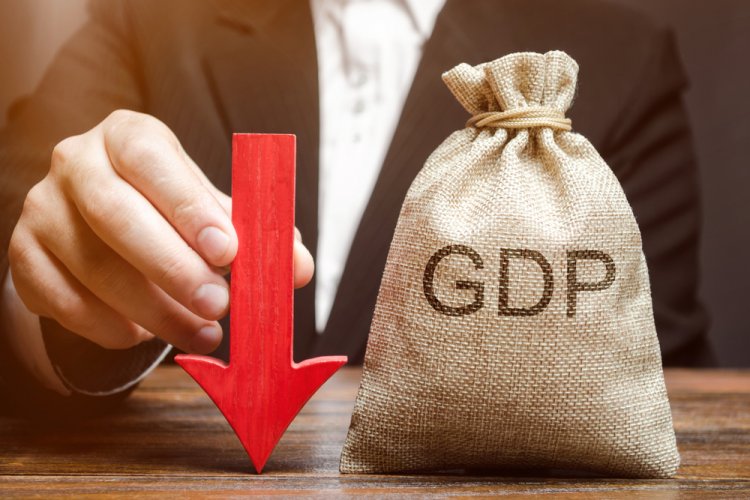Economy: Bleak Outlook for a Near-Term Revival
STORIES, ANALYSES, EXPERT VIEWS

The April Index of Industrial Production (IIP) estimates of the National Statistical Office (NSO), show all three sectoral constituents of the index — mining, manufacturing and electricity — suffered reverses, as output slid below the preceding month’s levels.
Manufacturing, which accounts for 77.6% of the IIP, saw production shrink 12.6% from March, and contributed significantly to a 13% sequential contraction in overall industrial output.
Earlier figures from April 2019 indicated the IIP registered a marginal 0.08% growth, aided by a 6.8% increase in electricity output from two years earlier. However, from the pre-pandemic level, manufacturing shrank 0.9%, reflecting the deep rut it finds itself in. Output of capital goods and consumer durables also lagged the corresponding 2019 levels by 14.3% and 11.6%, respectively, signalling that the outlook for investment in production capacity and discretionary consumption remains weak.
Other data from May, including manufacturing and services PMI and retail automobile sales, underline the extent to which economic activity has been constrained since the start of this quarter. With IHS Markit’s surveys showing manufacturing stagnating last month and services contracting for the first time in eight months, the Composite PMI Output Index slid from 55.4 in April to 48.1 in May indicating a moderate reduction in activity. New vehicle registrations more than halved in May from the previous month; job losses have accelerated, and consumer spending hit by a combination of falling real incomes, depleted savings and increasing health-care costs. The outlook for a near-term revival in consumption-led demand appears bleak right now.
Sticking to fiscal prudence may be conservative
This is borne out of the assessment of the Ministry of Statistics and Programme Implementation, according to which, the real gross domestic product (GDP) at constant (2011-12) prices in 2020-21 is set to contract by 7.3 per cent. The possibility of double-digit recovery of GDP is most unlikely due to the ongoing second wave and the risk of a third wave.
The contraction in GDP has immediate implications on revenue mobilisation of both the Central and State governments. CMIE data shows that 2.27 crore jobs were lost during April and May 2021. Most of them belong to the informal and low-income groups and would need income support and other social security measures.
However, due to the fall in economic activity, the Central and State governments have suffered massive revenue losses. The staggering positivity rates in the second wave may further strain their financial position. The continuous deceleration in output, income and revenue would create challenging situations for the governments, according to Biplab Kumar (PhD from IIT Kharagpur) and Amarendra Das (Reader-F Economic at NISER, Bhubaneswar).
Revenue loss, slashing expenditure: During 2020-21, most of the low-income States suffered revenue loss and this forced them to reduce expenditure. Not agreeing with this approach are the to authors. “Despite revenue contraction, States are supposed to keep the expenditure high to compensate for private investment and check any further deceleration in output. On the contrary, majority of the States chose to slash expenditure to remain fiscally prudent……..
“With the possibility of a second blow to the economy, the market may not invest enough to keep the economy afloat. In such a situation, State governments shouldn’t stick to fiscal discipline. Instead, the priority should be to increase public spending to revive the economy, generate employment, and provide all possible safety nets.”
Inflation numbers up
Inflation numbers for May — Consumer Price Index (CPI) has crossed the Reserve Bank of India (RBI) threshold of 6% and Wholesale Price Index (WPI) is at an all-time high — also underline the precarious nature of the ongoing economic recovery. The increase in prices is more broad-based than expected. Retail food inflation rose to 5.01 per cent in May, up from 1.96 per cent the month before, while core inflation, which excludes volatile food and fuel prices, rose to 6.6 per cent — the highest in seven years. At the wholesale level, too, prices continue to edge upwards.
A spike in price of essentials hurts even in normal circumstances. These are far from normal times. Labour market conditions are weak. Employment and wage earnings have not recovered to even pre-second wave levels. A large health spending shock during the second wave has destroyed household balance sheets for millions of households.
Monetary policy alone cannot bail the economy out
Inflation worries are likely to hamper recovery as the Central bank may not have the leg room for manoeuvre. While growth considerations continue to dominate, the central bank needs to be cognisant of the risks of higher inflation as it calibrates its policy response, and assesses when to embark on the road to policy normalisation.
It appears, writes The Hindustan Times “that the fiscal policy managers are banking on monetary policy to bail the economy out. While loan guarantees and cheap credit are instrumental in preventing destruction of productive capital, it cannot generate demand when consumer sentiment is low and companies are saddled with excess capacity. As inflation rises, RBI will be forced to withdraw the monetary stimulus. It is important to realise that pursuit of fiscal prudence at the moment will only lead to stagflation — low growth and high inflation.”
















